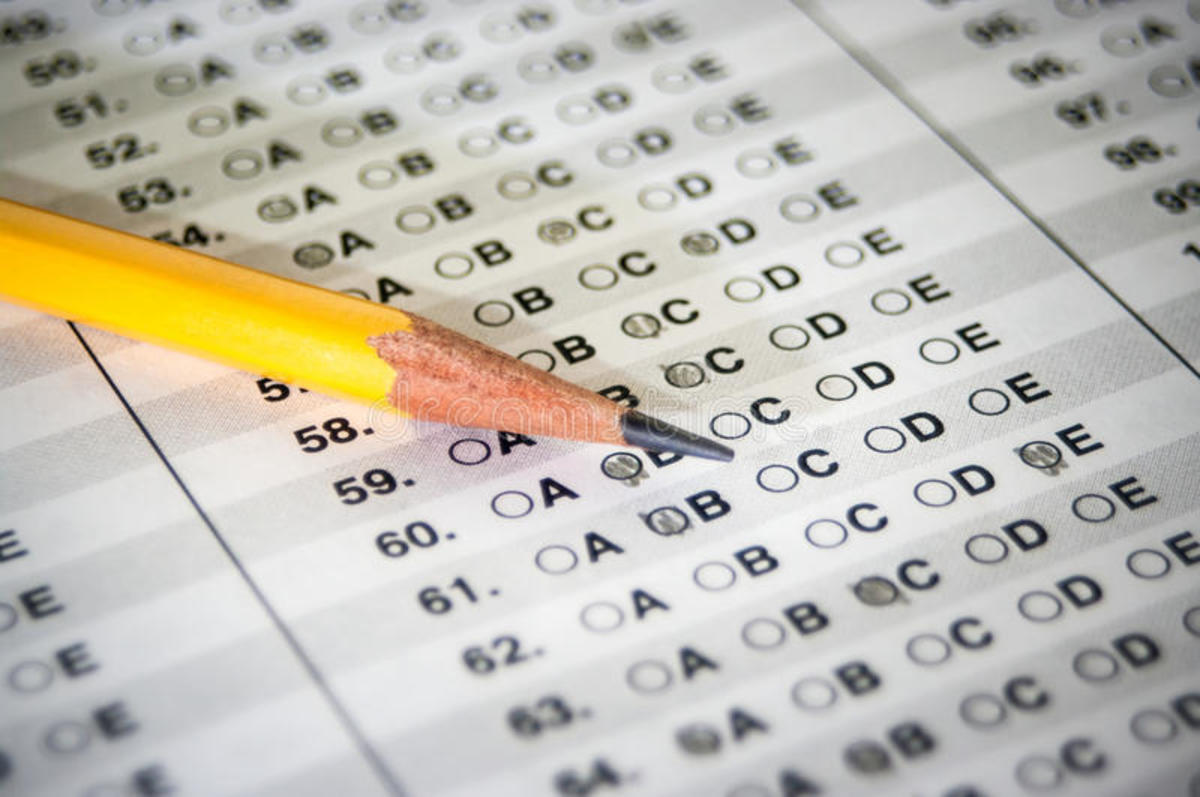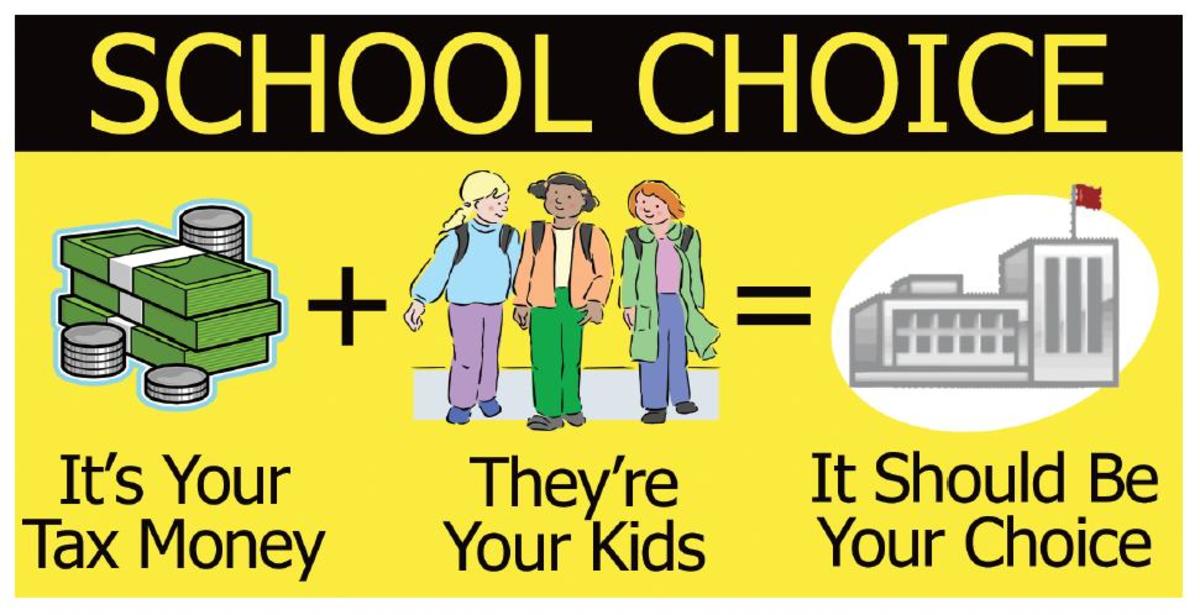Standardized Testing in School
Recently, on a local radio station KTRH 740AM, a report was read from the Houston area community colleges that nine-thousand freshman students entered college last fall, but five-thousand were required to take remedial coursework to get up to college level courses. The CaliforniaStateUniversity system, as reported by USA Today, commented that thirty-six-thousand freshman entered college, but sixty-two percent would have to take remedial courses in some area of study. These statistics alone should raise a red flag of concern as to what is, or more importantly what is not being taught in the public primary schools of America. Now referencing back to the nine-thousand freshmen from the Houston area, these same students were required to take the state mandated TAKS test to graduate. The state of Texas requires this test, based on Federal guidelines, to show to the public, and to prove to the Federal government that they have performed their job and educated the youth of Texas. There are similar tests in most states reflecting these same “performance ratings” to the Federal government, and still many freshmen are ill prepared for higher education in the colleges and universities across America. The misguided push for standardized testing in public schools, in this country, has failed to insure the education of its youth.
Standardized testing is not a new concept. Centuries ago, the Han dynasty, in China, created testing for civil service positions in the government, by quizzing candidates on math, writing, archery, horsemanship, music, rituals, and ceremonies. Through the years, Europeans created tests for entrance into the universities and colleges of the period. The United Sates army began measuring all of its soldier’s intelligence during World War I for military placement by using a new technology of the time, which measured the intelligence quotient of each soldier or what is now commonly referred to as the IQ test. Standardized testing has evolved into many versions throughout the twentieth-century in an attempt to measure the quality and level of education. The nineteen-twenties saw the invention of the multiple choice Scholastic Aptitude test and the nineteen-sixties brought the Elementary and Secondary Education act or ESEA, which required all schools receiving monies from the federal government to prove that they were achieving their educational goals.
The ESEA, which is reauthorized every five years since its inception in 1965, created the link between federal aid standards and primary education. These standards have increased with continued reauthorization. In recent years, Public Law 107-110, or more commonly referred to as the “No Child Left Behind” law, has created the highest standards for public schools to achieve and to receive federal aid.
The notion of mandating a standardized test based on non-standardized teaching methods is illogical. This is not to suggest that teachers are incompetent or not performing. It would be safe to say that most teachers have chosen their profession not for the money, but the joy that it brings to them when they see their pupils acquire knowledge with their guidance. In fact, teachers are caught in the middle of this bureaucracy of standardized learning, because every teacher has developed his or her own methodology for presenting the curriculum for the given student populace and ability. Not all students acquire knowledge at the same rate or with the same method.
These same teachers tend to highlight different aspects of the same lesson. An example of this would be two math teachers, in the same grade level, who provide their students with a mathematical formula sheet, but one teacher puts strong importance on the functions, and real world uses of each formula, and is not concerned with memorization. The other teacher stresses the memorization of the formulas, and briefly covers the basic function of each one. This example represents a common situation that occurs in most schools today, which leads to other issues such as the “one test fits all” theory.
The “one test fits all” as a barometer to measure the quality of an education system is misleading. This thinking is flawed as it disregards all other learning accomplishments and activities. Not to discount grammar, but this one test method is comparative to quantifying the correct use of commas in a paper as opposed to the creative ideas that may emerge from its content. Linda McNeil, who is an instructor at RiceUniversity, expressed her opinion, as “Measurable outcomes may be the least significance results of learning.”
Teachers are forced to conform to the standards and cram lists of facts upon their students to pass this test; unfortunately, this method provides fact and not content or specific relationships to higher learning. Many Americans have read or heard of other countries excelling in certain areas of study because of their “standardized system” of learning, but what is not commonly understood is that countries on the lower end of the spectrum have the same system. Obviously, what works for one group of students does not work for all, or in other words, one test fits all is a fallacy.
The pressure of the standardized test falls squarely on the students. He or she has prevailed through the different teaching methods of various teachers or instructors, but fails to qualify on one test and is not permitted to graduate. In fact, at certain grade levels, those students not passing this test are retained to this level or are required to take a course designed to pass the test. These courses often become nothing more than study halls for other study, but the student receives no credit towards graduation and is prevented from engaging in the learning process in other areas of study until that student can pass this test. This action relegates all other learning, or activities that would make a well-rounded student prepared for higher education secondary to the ability to memorize a stack of facts that have no meaning.
The federal government, and many proponents of standardized tests have proclaimed that this test provides accountability, quality of education for all, and prevents schools from sliding students through the educational system. The American public must decipher all of these components separately and decide if this is truly the case.
No doubt, schools should be held accountable for their ability to educate the youth of America, but this accountability should be left to the local communities to govern their schools. The sound byte of “accountability” creates a multitude of issues including the fact this creates a level of simple mistrust between the federal and state or local governments that the education process is not being done. The words accountability and the federal government when used within the same sentence is an oxymoron. This is the same government that cannot find a way to spend less than eight hundred dollars for a hammer or toilet seat, which the ordinary citizen can purchase for less than ten dollars. Therefore, the federal government has mandated that no matter what the local educational authority has in place to improve the quality of its education process; if their students cannot pass this one test it has failed, and is grounds for federal aid to be withheld. The student is the one who loses in this situation.
The quality of education is improved for all. Although, this may have been well intended, but in many poorer school districts have turned their curriculum into preparation schools for the standardized test so that they can continue to receive federal aid. They have geared their teaching to only what is on the test, and what is not on the test is not taught. Many parents are beginning to question why homework and reviews that come home with their children are centered on one test. The funding of fine arts programs in public schools has increasingly been cut back year-to-year, and since this is not a part of the standardized test, parents must draw upon their own conclusions. Furthermore, affluent school districts are not immune to “teaching to the test.” Many days and weeks revolve around preparing for the standardized test. It should be disconcerting when a schools normal teaching curriculum is interrupted to take a practice-standardized test only to track the progress of their student’s ability to pass this test. The student is the one who loses in this situation.
Students will no longer be shuffled through the system just to graduate them. This was one of President Bush’s reasons to pass the “No Child Left Behind” law, and the HoustonSchool District was his model of the success of the standardized test. Unfortunately, it was not until after the passage of this law that the scandal surrounding the cheating on this standardized test provided just what pressure is put upon schools to comply. It was reported by the Houston Chronicle, that teachers in fact helped students by either providing answers to the tests or simply just helping them during test time. Some students were held back so that they would not have to take the test, and thus providing a skewed percentage of how well certain grade levels were progressing. Houston is not an isolated case by no means the Associated Press has reported cases in California, Minnesota, and New York just to name a few.
Also reported by the Associated Press, the Nation Education Association with a membership of over two-million is funding a lawsuit to fight this standardized test system, and ironically, school districts in Texas are part of this lawsuit. The standardized test has not prevented cheating, but it may have just compounded the problem. The student is the one who loses in this situation.
The standardized test system is a failure. To utilize one test as a governing factor to base a school district’s quality of education is just plain absurd. To reduce the teacher to just a person who issues fact sheets, or not to provide motivation, or initiative to their students to ask deeper and higher thinking questions that will give them a complete education is a complete waste of a valuable asset. The quality and well-rounded education of America’s youth has to be in the forefront in improving the public school system, but the standardized test can only be one tool of many to measure the quality and content of the public school system.









